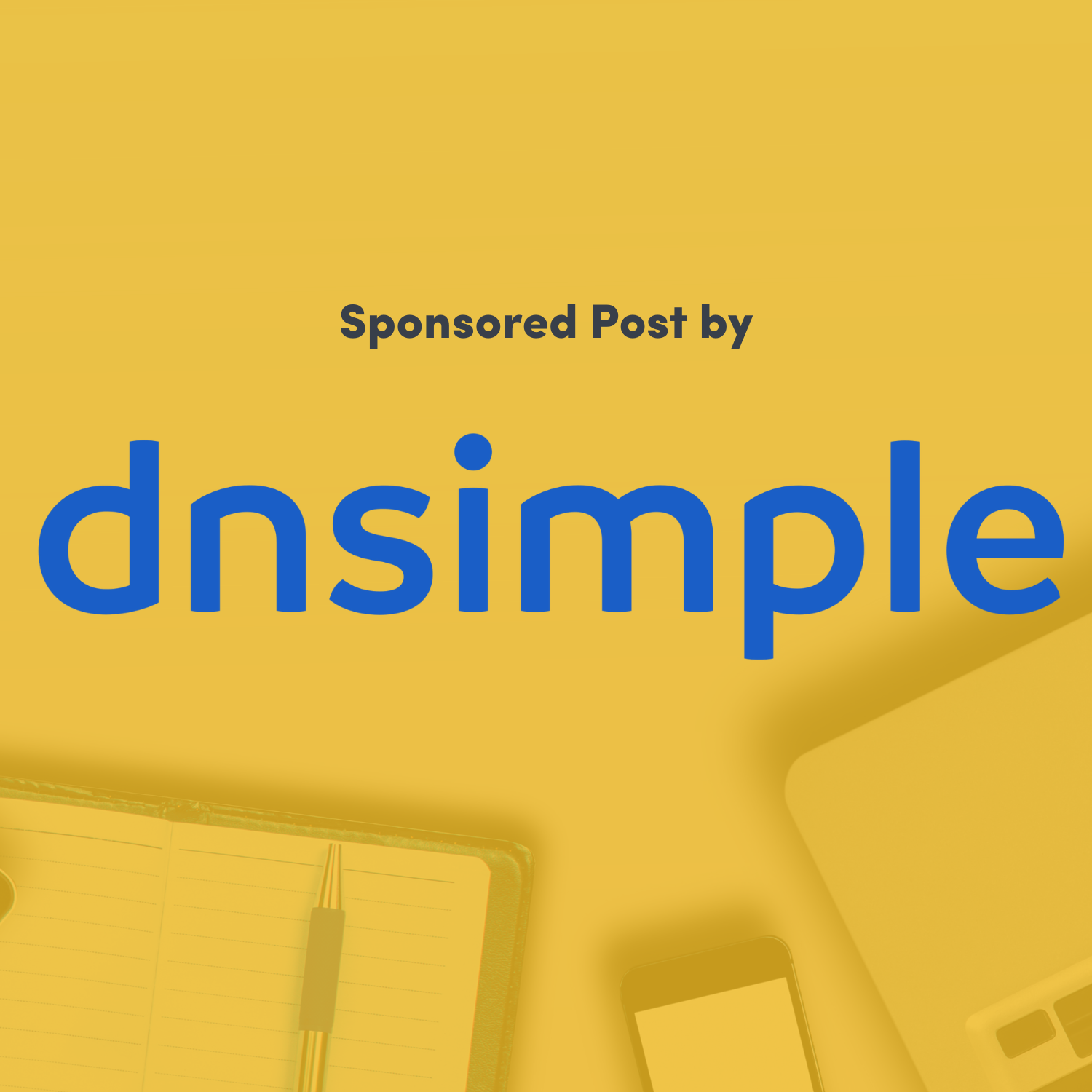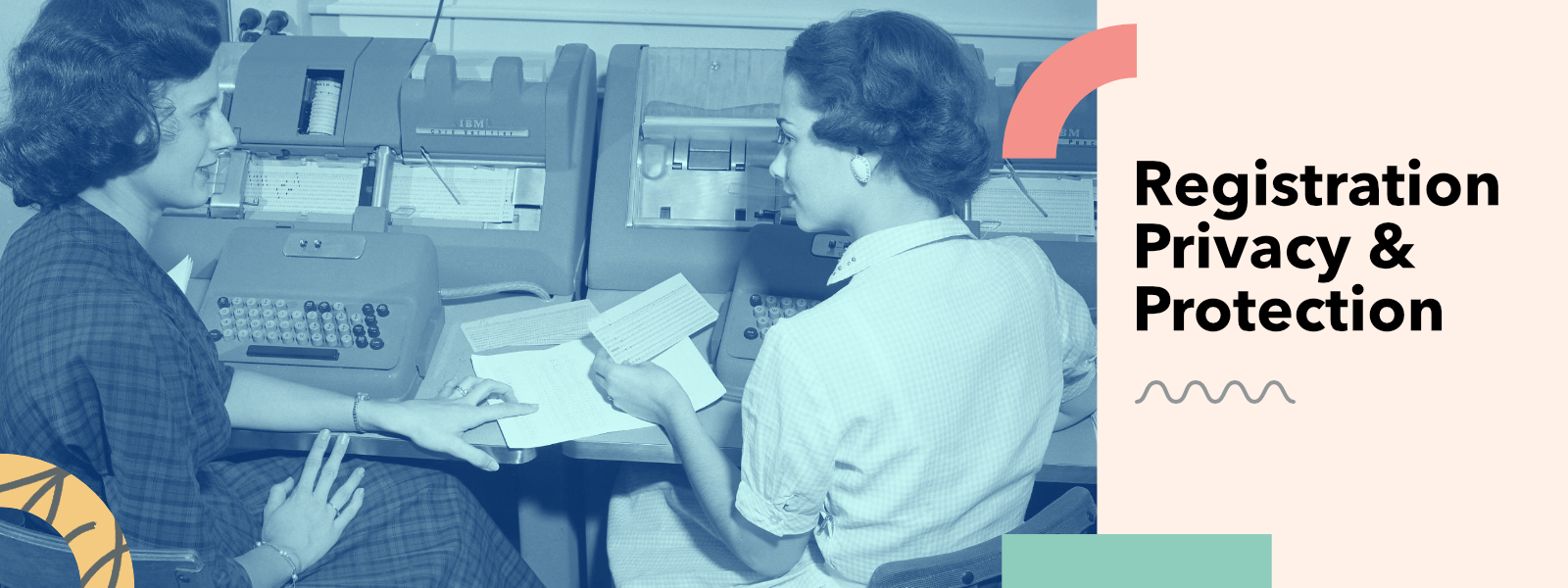You’re not only a .com
This post is sponsored by DNSimple.
We’ve become so used to URLs that we don’t really pay much attention to the names we’re entering on our devices – .com is part of our daily lives.
But when you have to come up with a new name for your business or rethink your branding, things become complicated. Where do you look for new TLDs (Top Level Domains)? How do you choose and buy the perfect name? Is it available? And how do you protect it to make sure you don’t lose it?
At DNSimple, we know you’re more than just a .com. With so many options out there, there’s no reason to limit your domain possibilities. Let’s talk about the process of finding the right name & TLD for your SaaS business, and protecting it so it’s yours for as long as you need it.
Finding a domain
There’s so much more than just .com, .net, and .org out there. Different types of TLDs open up a variety of opportunities for you to create a memorable URL for your business.
ICANN (The Internet Corporation for Assigned Names and Numbers) maintains the official list of all available TLDs.
These are some of our favorite tech-oriented and SaaS-related TLDs list where you can start to find inspiration: .tech, .technology, .ai, .xyz, .host, .cloud, .app, .software, .io, .dev,.site, .network, .solutions, .computer, .build, .builder, .business, .page, .design, .systems
Current branding trends towards innovation and an indicator of online presence through your choice of TLD. A good example of this is .io and its positioning for tech businesses. Along with .io, .page, .site, and .cloud have been gaining popularity in the tech scene.
Another increasingly popular branding option is integrating the TLD in your name – like we see with something like simple.ink or taco.party.
You could try to register the .com version of your company name, but with so many .coms out there, it may not be for sale. But that doesn’t mean you need to change your name. Buying your domain in a TLD that fits your company ensures you get the branding you want, and you can always try to acquire the .com later.
Tools
There are myriad domain name search tools out there to help you find your best options. Each registrar provides a variety of alternate options included in the search for your chosen name’s availability. We like Domainr, because it’s a stand alone tool that helps you find the best available extension. Type the name you want, and they’ll show you multiple possibilities.
Other useful tools for finding domain names include Instant Domain Search and Geek Flare.
Things to pay attention to
Make sure there are no trademark issues with your name. If you’re in the US, check for trademarks on names here (before you buy a name you can’t use).
You might end up buying multiple domains for your company, or switching domain names completely once you’ve found the perfect one. In that case, you’ll want to set up URL redirects with HTTPS – you can read more about how to do that in DNSimple’s redirector support article.
Buying a domain
Available Domains
You can buy an available domain at any domain registrar. Some registrars aim to have the lowest price, and others work to give you the features you need to manage your domain after you’ve purchased it.
Registered domains
There are several ways to find out if a domain is available for sale. First, visit the site you want to use. If you see a Parked Site page, it’s probably for sale.
Otherwise you can use WHOIS to see who the owner is, and, if you really want the site, inquire about buying it.
https://lookup.icann.org/lookup
Some domains will also be for sale in the domain aftermarket. Sites like Sedo and Afternic connect domain buyers and sellers and help facilitate purchases of second hand domains. But don’t let the term second hand fool you – these can be very expensive.
Who should the registrant be?
If you’re registering your domain for your business, ensure you use your business contact as the registrant. This avoids conflicts later if the registrant is an individual who is no longer associated with your company.
Always ensure the email address used on your registrant is valid and that you can receive email there. Using a company email address that you can provide limited access to is a good idea. Remember, anyone with access to that email can transfer the domain to another registrar, and potentially change the registrant for the domain, so be careful.
Does whois privacy matter?
With increased governmental pressure around individual privacy, many TLDs automatically redact contact details in public whois data. Check with the TLD you’re using, but in many cases, whois privacy is no longer necessary. If you use a company contact, whois privacy is even less important.
Why are some domains more expensive than others?
Some TLDs charge more than others based on market and number of potential customers.
Premium domains are more expensive compared to a .com, and their cost fluctuates depending on the name used – generally, the more common the word, the more expensive the domain. For example, dnsimple.shop is priced at $49 USD, whereas slippers.shop is premium, and will run you over $700 USD.
Protecting & keeping your domain
Auto renewal
If you want to keep your domain, you should always have auto renew enabled. Your domain is the key to your online identity, and how your customers find you – especially if your company name is in your email address. If your domain name is not active, chances are you’ll also lose your email service. DNSimple offers auto-renewal on all our plans, and we encourage customers to enable it. It just takes a single click and you’re all set.
Multi-year renewal
Multi-year renewal makes sense if you don’t have auto-renewal enabled, or as a long-term option that reduces the chance of losing your domain name, not to mention the stress of remembering to renew. You’ll also save money because it locks the price of the TLD for several years. However, some TLDs don’t allow multi-year renewal – another reason to enable auto-renew.
Protecting trademarks
We previously talked about making sure that there are no trademark issues with your name, but let’s talk about how to protect the domain name you registered. Trademarking a domain name with the US Patent and Trademark office will give you exclusive rights to use this domain name to do business. It will protect you legally against theft of your customers and/or the misuse of your brand identity. You can fill out an online application directly through the USPTO application site, or get the assistance and guidance of a professional.
If you’re in the EU, the European Union Intellectual Property Office covers all trademark registration for EU countries.
EU – the European Union Intellectual Property Office (EUIPO)’s trademark registration
UK – the United Kingdom Intellectual Property Office (IPO)’s trademark information
Canada – the Canadian Intellectual Property Office (CIPO)’s registration for non agents
For our friends outside the US/EU/Canada, each country has an entity specialized in trademark registration with their own application process. To find your country’s requirements, search “country of origin” + trademark registration, or seek the help of a professional in your country.
More resources
Of course we can’t cover all the nuances in a single post, but both our blog, and support repo are excellent resources for learning more about domain management, no matter how many domains you own. You can also take a look at this post for even more domain name tips.
We love being part of the MicroConf community, and we always enjoy talking about domains and answering your questions. If you need help with your new domain or have more questions about domain names or DNS management, just drop us a line – we’d love to chat.
Not using DNSimple yet? Give us a try free for 30 days. We’re extending a special promotion for the MicroConf community – get an extra three months on us when you subscribe to the Pro Plan.



